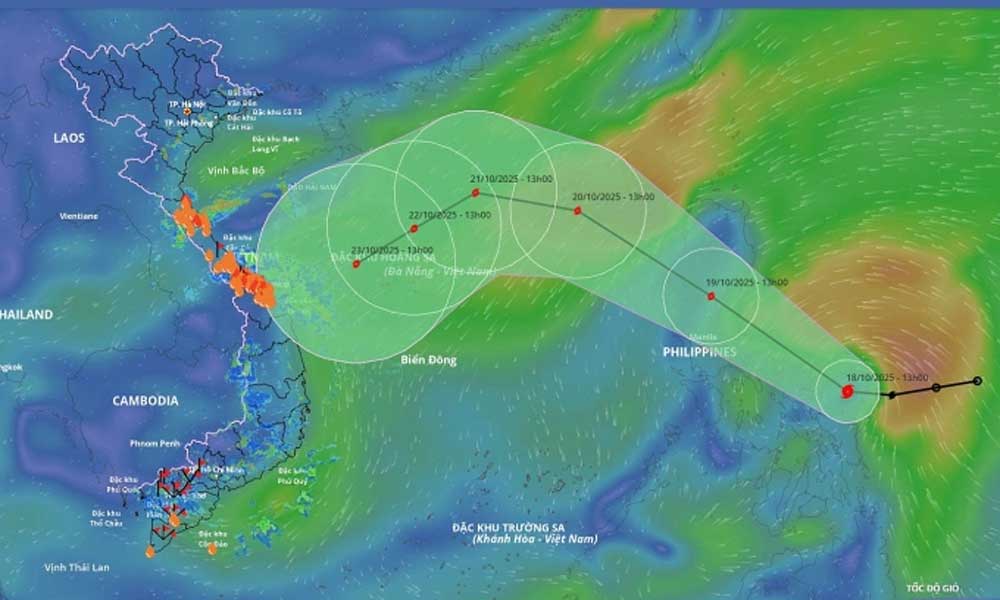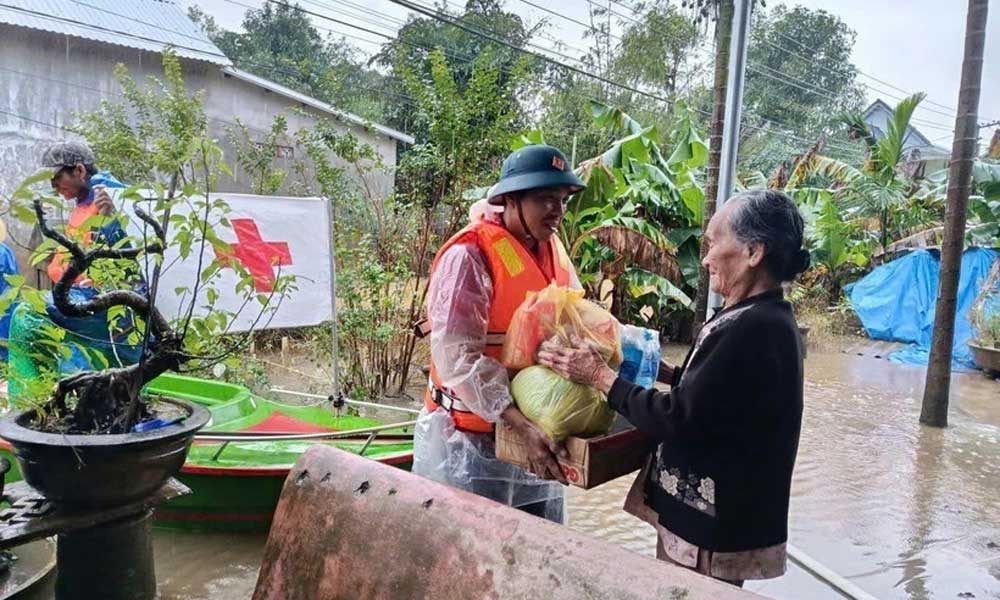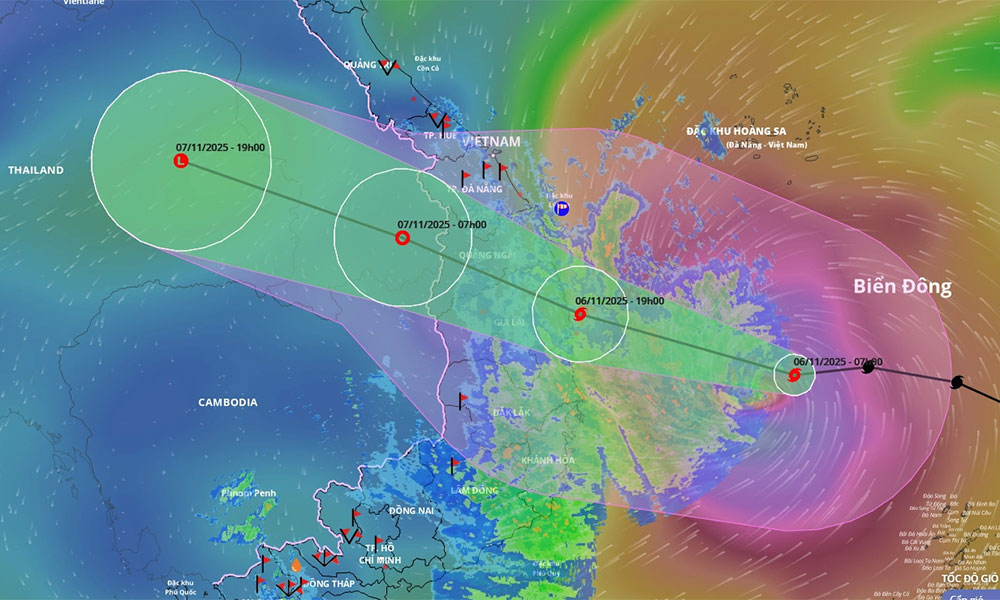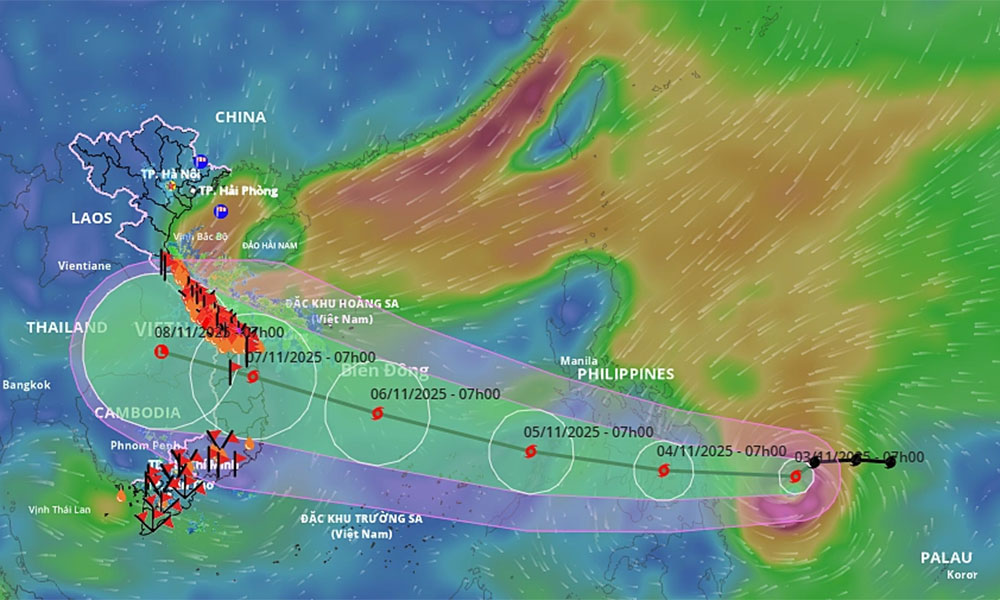Typhoon Kalmaegi weakens into tropical depression after battering Vietnam overnight
Typhoon Kalmaegi rapidly weakened into a tropical depression and then dissipated into a low-pressure area on Friday morning after it slammed into central Vietnam the previous night.
The storm, which made landfall in Dak Lak and Gia Lai provinces with winds between 118–149 kilometers per hour (kph) at around 7 p.m. Thursday, took six hours to lose its intensity as it moved into southern Laos.
 |
|
Waves along a beach in Nha Trang of Khanh Hoa Province before Typhoon Kalmaegi arrives on Nov. 6, 2025. |
According to the National Center for Hydro-Meteorological Forecasting, the storm's intensity significantly decreased by 1 a.m. when it lay west of Quang Ngai–Gia Lai provinces, with winds dropping to 39–49 kph. The storm circulation completely dissipated by 4 a.m., leaving behind a low-pressure zone.
Before its collapse, the typhoon still generated substantial winds across the affected area. Ly Son Island in Quang Ngai Province recorded wind speeds of 61–74 kph, while areas from Da Nang to Dak Lak experienced speeds of 50–88 kph. Regions closer to the storm’s center felt the brunt of the winds, which peaked at 89–117 kph.
Rainfall and initial casualties
The typhoon’s impact triggered heavy rainfall from Thua Thien Hue to Khanh Hoa. Between 7 a.m. Thursday and 1 a.m. Friday, Dak Lak recorded the highest accumulation at 354 millimeters (mm), followed by Quang Ngai with 283 mm, and Gia Lai with 263 mm.
The overnight weather caused rising sea levels and flooding in several areas, severely damaging numerous homes. Authorities deployed rescue forces to assist residents and assess the initial destruction.
One man in Xuan Lanh Commune, Dak Lak, died when his house collapsed, and two people in Gia Lai sustained injuries while attempting to secure their property and move belongings.
In preparation for the storm, nearly 129,000 households with over 537,000 people were evacuated to safety, with Quang Ngai and Gia Lai reporting the highest numbers. Authorities also oversaw the reinforcement or relocation of more than 93,000 aquaculture cages.
Due to the safety threat, authorities in Quang Ngai, Dak Lak, Khanh Hoa, and Gia Lai suspended classes on Thursday and Friday. Coastal localities including Da Nang, Quang Ngai, Dak Lak, Khanh Hoa, and Gia Lai implemented a ban on sea operations.
Flood alerts
Meteorologists warn that the center of heavy rain will shift northward. On Friday morning, areas from southern Quang Tri to Da Nang and the Central Highlands are expected to receive 20–50 mm of rain, potentially exceeding 80 mm in isolated spots, while rainfall from Thanh Hoa to northern Quang Tri could reach 50–150 mm, with some places seeing over 200 mm.
From Friday night to Sunday, water levels in several major rivers, including the Tra Khuc, Ve, and Se San (Quang Ngai); Kon River (Gia Lai); Ba, Ky Lo, and Srepok (Dak Lak), may reach alert levels two to three, with some points potentially exceeding level three, the highest warning.
Other river systems, such as the Bo and Huong in Hue and Vu Gia–Thu Bon in Da Nang are expected to reach alert levels one to two or higher.
Typhoon Kalmaegi, the 13th storm to affect Vietnam this year, began as a tropical depression over the central Philippines on Nov. 1. It entered the East Sea on Wednesday morning with winds of 134–149 kph.
Moving west–northwest over warm seas, it intensified rapidly, peaking at 167–183 kph on Thursday morning before making its evening landfall.
The storm left heavy destruction in the Philippines, killing at least 140 people and leaving 127 missing.
 Bắc Ninh
Bắc Ninh



















Reader's comments (0)